The National Theatre (for a few years the Hungarian Theatre of Pest) operated from 1837 for decades on its own playground, at the corner of Rákóczi Road - Múzeum Boulevard, but this building was closed in 1908 due to obsolescence and fire protection reasons. At that time, the institution moved into the building of the People's Theatre in Blaha Lujza Square for a temporary period until its own headquarters was built. This plan was swept away by time, and the National - at that time it seemed - was finally settled in Blaha Lujza Square.
But in the early 1960s, the political leadership at the time decided to demolish the building, citing underground construction, so the theatre had to move in 1964. After that, the company of the National gave its performances at the Thália Theatre, and from 1 October 1966, it moved to the building of the Hungarian Theatre on Hevesi Sándor Square (former Izabella Square).
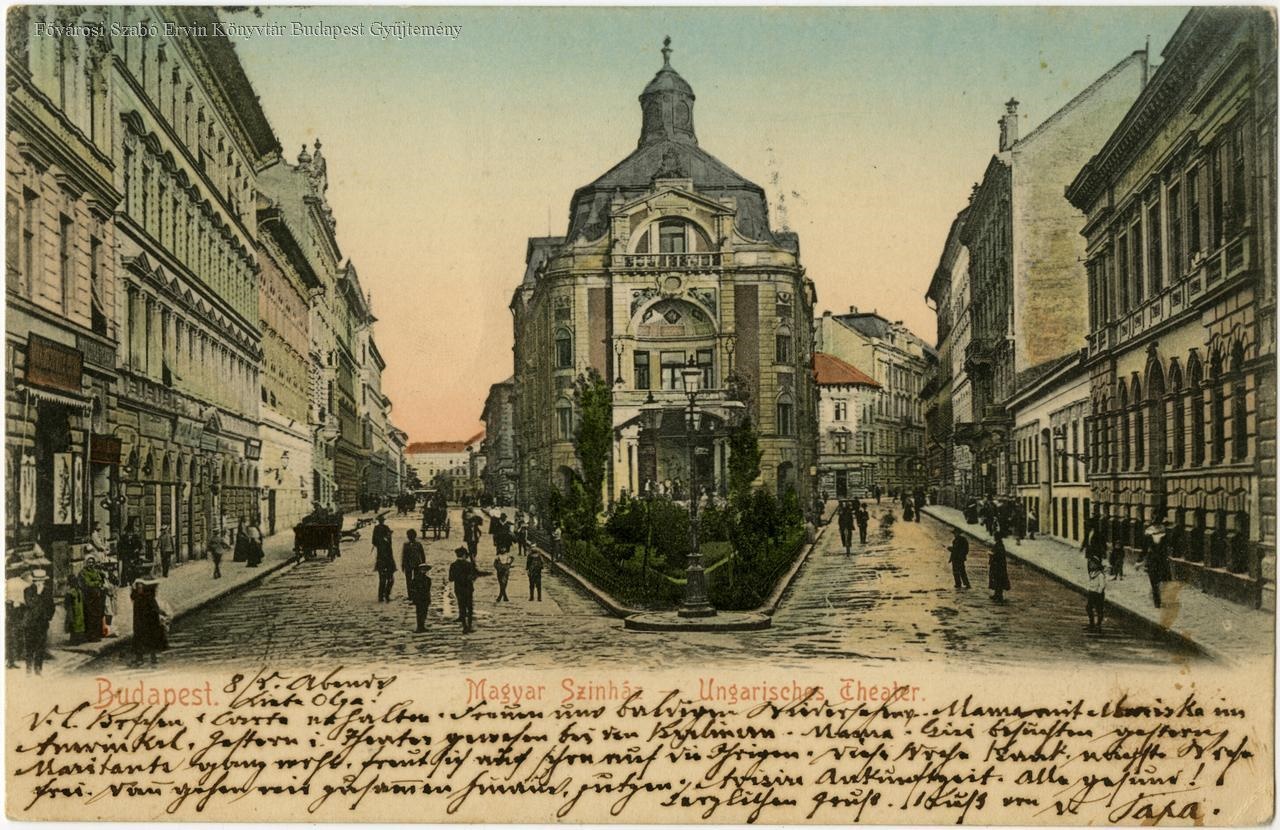 The original facade of the Hungarian Theatre in Izabella Square (now Hevesi Sándor Square) (Photo: FSZEK Budapest Collection)
The original facade of the Hungarian Theatre in Izabella Square (now Hevesi Sándor Square) (Photo: FSZEK Budapest Collection)
The Izabella Square theatre was erected in 1897 according to the plans of Adolf Láng, it was the second private theatre in the capital. The theatre building, which originally accommodated 996 people, was rebuilt several times in the following decades, the first time in 1914 when it was significantly expanded. It was also hit by bombs during the war, yet acting in Budapest resumed in this exact building.

The building after the 1914 Vágó transformation (Photo: pestimagyarszinhaz.hu)
Even then, the theatre operated in a private enterprise, until nationalisation. In the nearly decade and a half that followed, it was home to several companies: from the nationalisation of 1947 for four years as the chamber theatre of the National Theatre, then for a decade, until 1961 it was known as the home of the Madách Theatre. Petőfi Theatre operated within its walls for a short period between 1962-1964.
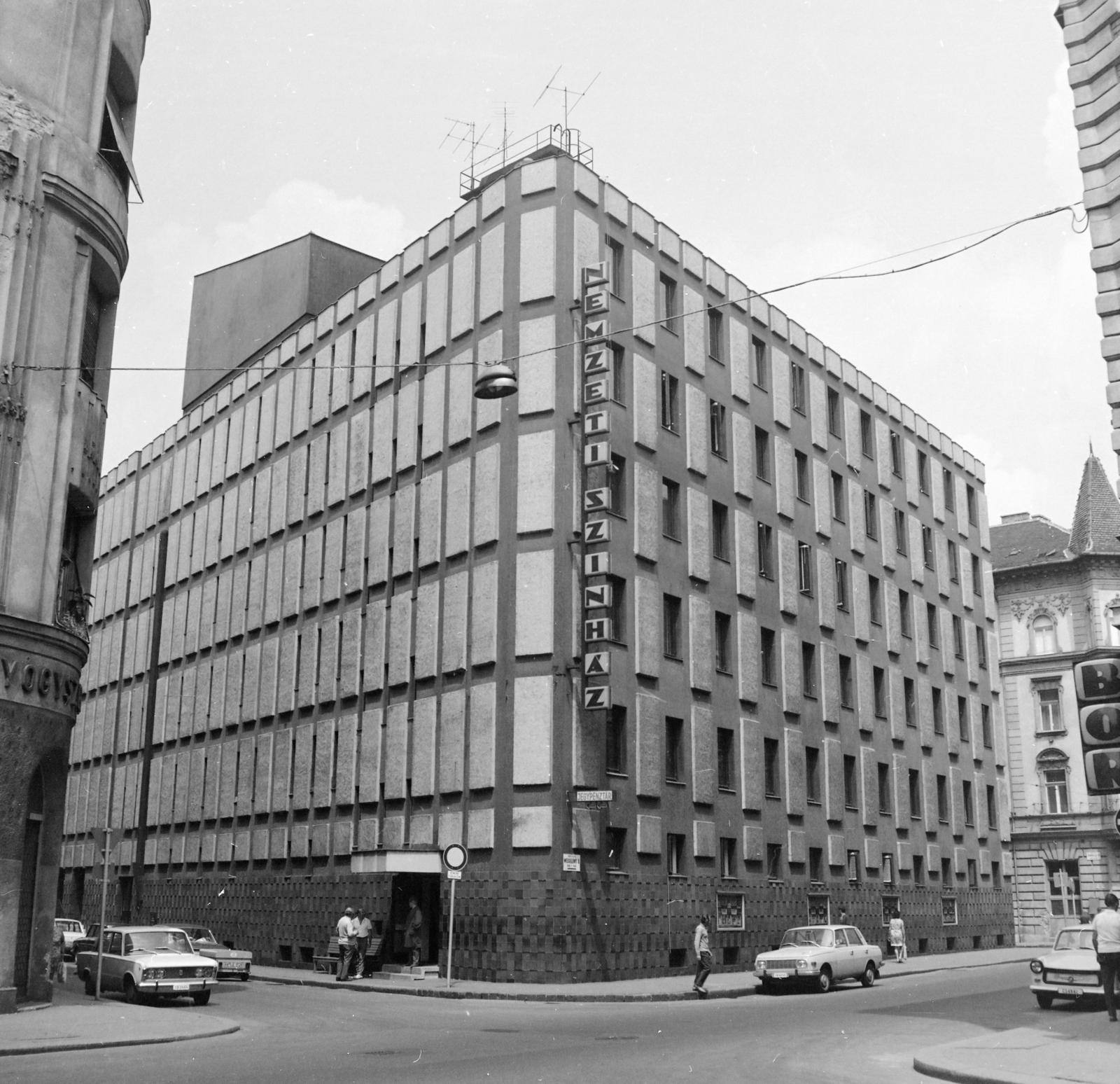 Side view of the rebuilt theatre building in 1973 (Photo: Fortepan/Main photo)
Side view of the rebuilt theatre building in 1973 (Photo: Fortepan/Main photo)
After the emptying of the theatre building in Blaha Lujza Square in 1964, the decision was made that the company could operate in this building until the new National was completed. The situation was eerily similar to 1908, as even then it was calculated that the company would only have to move to the People's Theatre for a few years until the new, final building was completed. True, at the beginning of the 20th century, due to World War I, they were unable to build a new theatre at the Astoria, while in the second half of the 20th century no such obstacles arose, and even in 1965, a tender was announced for the plans.
The author of the 26 December 1965 issue of the Magyarország was enthusiastic about the new, final National Theatre:
“The new National Theatre will be built on Dózsa György Road, with a facade facing the Gorkij Avenue. The free space allows the designers to build a building complex according to the most modern requirements. (The new National Theatre is planned to consist of three blocks of buildings: the main building will house the actual theatre, the chamber theatre will be in the adjoining chamber hall, and the service buildings next to or behind it: warehouses, workshops, etc.).
The half-century-long calvary of the National Theatre was coming to an end. After the panamas and false promises of the capitalist society, the socialist state had the honourable task of raising a shelter worthy of its destiny for the Hungarian Thalia, as Széchenyi had dreamed of, in the right place”
However, construction was delayed, and the National Theatre remained in Hevesi Sándor Square for 34 years.
Prior to moving in in 1966, the building was thoroughly remodelled, the reception hall and auditorium were virtually demolished, and the old upscale, historicist-style theatre was transformed into a stripped-down cube building in the style of the 1960s.
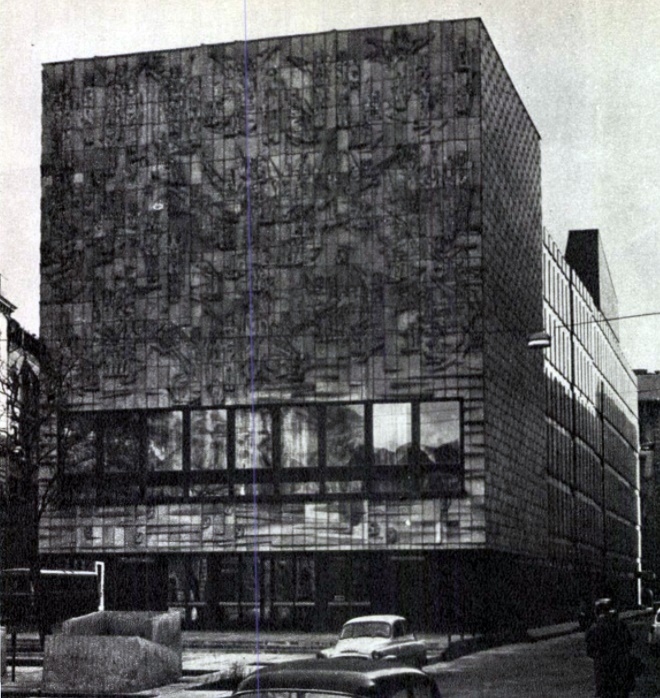
The new facade in the April 1967 issue of the Művészet magazine
The plans for the transformation and reconstruction were made by Sándor Ázbej. The house was raised by two levels, on the modernist facade bordered by straight walls, a composition made of 757 Zsolnay pyrogranites was placed, which was the work of the sculptor Gyula Illés. The 8 August 1966 issue of the Tükör also wrote about this, and the attitude of the era to old city buildings can also be read from the text:
“On the facade is the huge ceramics of Gyula Illés. Pale yellow and many tiny figures can be seen on it. Or not. Because the individual figures are indistinct, so a vibrant composition full of monumental folds and creases adorns the facade of the building. Adorns; apparently, this was also its purpose, and not to tell of epochs in the history of theatre. How, then, will this show in a few months or a year or two, when it will be the same rain-washed, pigeon-honoured building as the surrounding plaster-stucco houses in Erzsébetváros? Who can tell that? Not even the artist himself who dreamed this beautiful wall covering.”
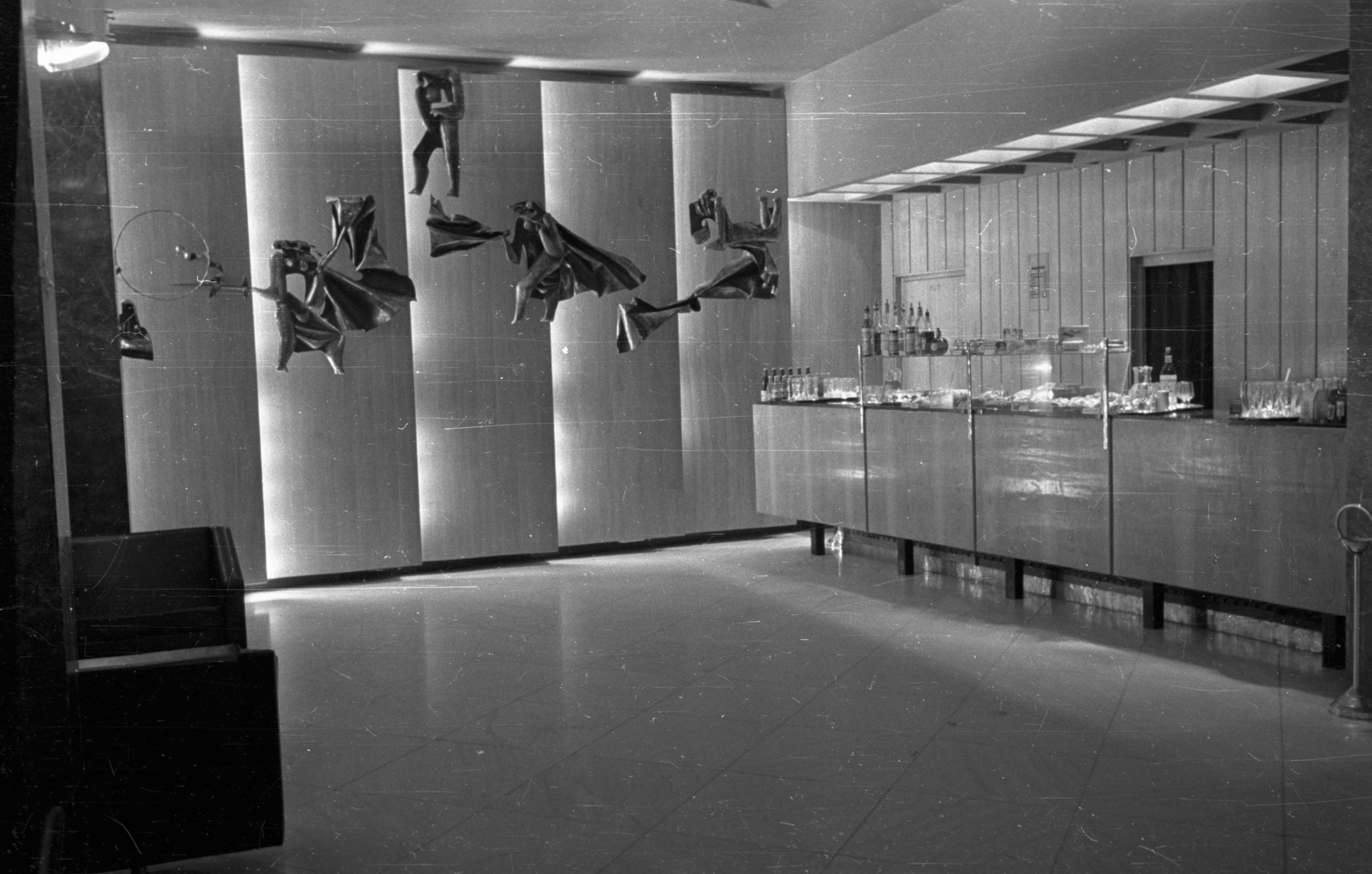 New theatre buffet in 1966 (Photo: Fortepan/No.: 127225)
New theatre buffet in 1966 (Photo: Fortepan/No.: 127225)
The house was also modernised from the inside, the ornate foyer was demolished, a new auditorium was built and the interior stage equipment was also replaced. All this was done even though the company of the National Theatre was, in principle, planned to be located here for only a few years.
In the theatre on Hevesi Sándor Square, the company of the National presented The Tragedy of Man on 1 October 1966, taking possession of the building, which was their home for the next 34 years.
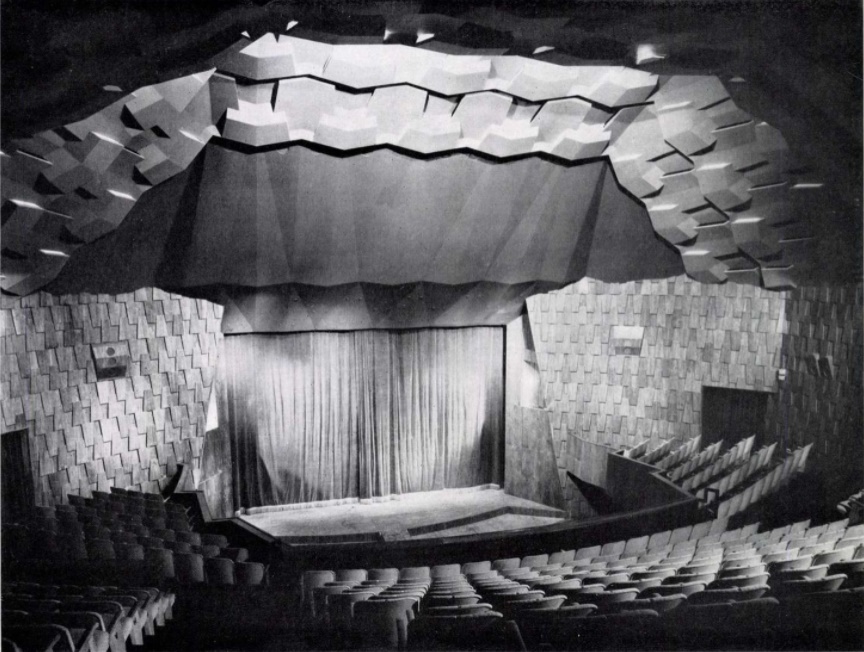 The new auditorium in the January 1967 issue of Magyar Építőművészet
The new auditorium in the January 1967 issue of Magyar Építőművészet
Until the change of regime, it was not possible to build a new house for the Hungarian Thalia, only after the end of socialism - after heated debates and abandoned constructions - in 2002, when the National Theatre's own building was inaugurated in the 9th District.
Cover photo: The building of the theatre, completed in 1966, with the composition of the sculptor Gyula Illés on the facade (Photo: Google Street View)

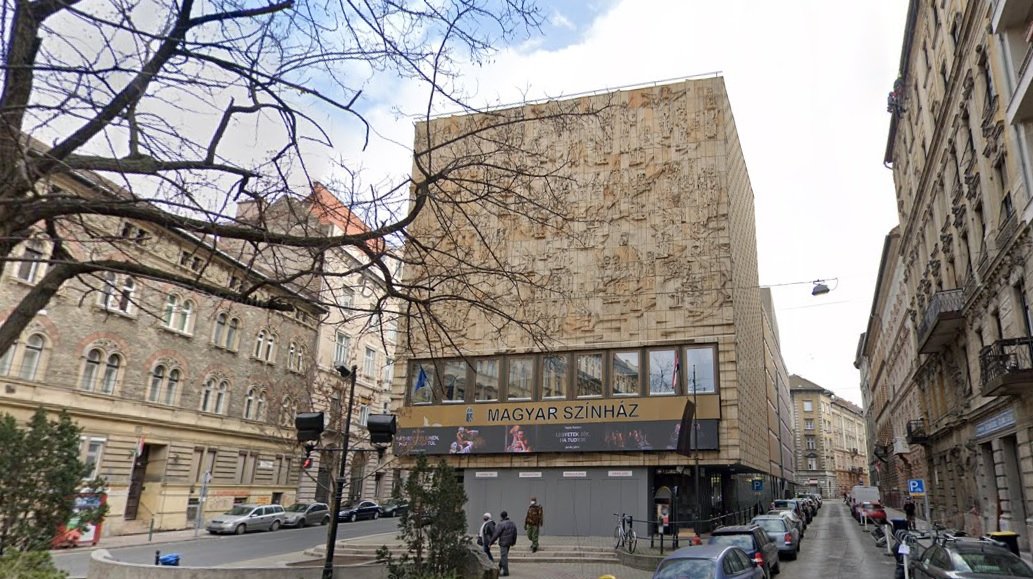


































Hozzászólások
Log in or register to comment!
Login Registration